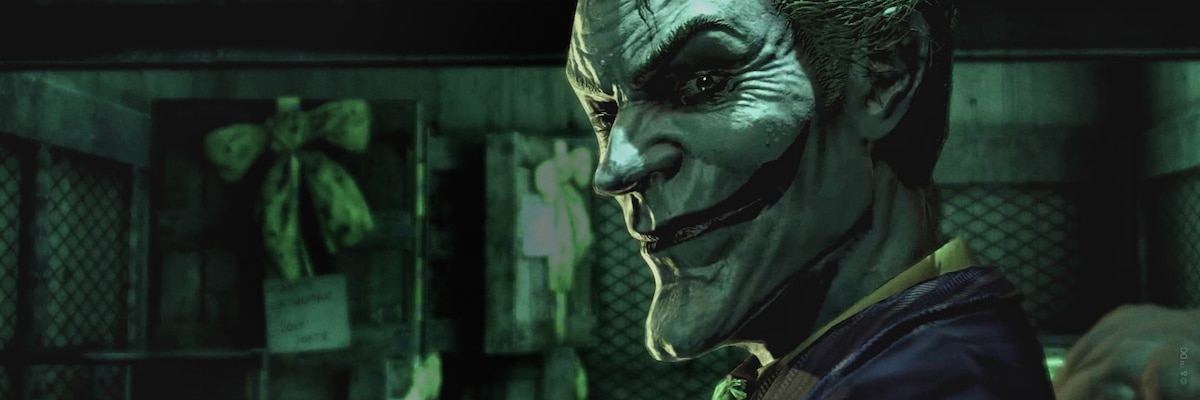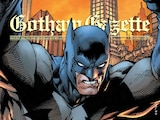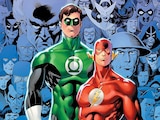Who is the Hamlet of the modern age? The complex character built to be interpreted thousands of different ways, as the greatest challenge an actor can take on? Which modern figure has been portrayed by more prestigious, award-winning actors than any other of their kind? Before you answer, think about Jack Nicholson. Heath Ledger. Joaquin Phoenix. Ah, now you see, don’t you? It’s the Joker.
And yet, for all the prestigious awards accrued by these players, one fan favorite stands above all. We’re referring, of course, to the man with “Ark Ham” in his name. The crown prince of clown princes. The one and only Mark Hamill.
What is it that makes Hamill’s performance so great? Is it the nuanced layering of mirth and menace, as he switches between them like an expert stand-up comic moving between jokes? Maybe that’s part of it. But any actor worth their screentime will tell you the same—that acting is reacting. In most drama, comedy, horror and every other genre the Joker represents, a performance can only be as good as the sum of one’s scene partners.

It’s for this reason that Hamill, sadly but quite understandably, announced his recent retirement from his role as the Joker, inimitably performed across media since 1992’s Batman: The Animated Series. Last year, the world lost Kevin Conroy, the greatest Batman there’s ever been, and Hamill’s stalwart scene partner in his battles across the Gotham City rooftops.
“Without Batman, crime has no punchline,” Hamill told us in the Joker’s voice, in the Batman: The Animated Series episode “The Man Who Killed Batman.” These two roles have defined each other since 1940. What Joker could persist after his partner’s demise?
It’s a tragedy, to lose a relationship we’ve used to anchor these characters, who represent order and chaos in our own lives, in a sudden unforeseeable calamity. Adrift. Cheated. Like a drama ended before its denouement. The final sentence left unspoken. You might miss Kevin’s voice like an aching absence in your soul and Hamill’s performance like the echo of laughter silenced.
Closure. That’s the word. That’s what we’re missing. Where is the final act of the greatest version of the greatest rivalry in the history of heroes and villains?

The answer won’t be found in their last performances across from each other. Justice League Action, which reunited the duo in their last long-form project, is a delightful romp, but doesn’t deliver the conclusion this dynamic deserves. The greatest final statement in this transmedia drama is a trilogy of video games, released between 2009 and 2015—now seeing a new collected release on the Nintendo Switch. The greatest final statement on Batman and the Joker, by the greatest actors to ever play them, is Batman: Arkham Trilogy.
The dynamic in these games between the Dark Knight and his moral opposite doesn’t just feel right because of the voices—it’s also due to the scripts of Batman: The Animated Series writer Paul Dini, who wrote the story for the first two games in the trilogy.
Arkham Trilogy isn’t set in the same continuity as Dini’s animated universe, but Batman and Joker in particular bear the same soul, scarred by the same struggles. The importance of their relationship is centered from the very start, the drama opening on Batman transporting the Joker to Arkham Asylum for what would prove to be the final time. Joker orchestrates a hostile takeover of Arkham, taunting Batman over the facility’s loudspeakers as his accomplice, the Scarecrow, bends his mind. Mind-altering psychotics and disease-addled states of consciousness will continue as a theme throughout the series, visually allowing Batman to explore his connection with the Joker in exponentially visual ways.
In the sequel, Arkham City, Batman and the Joker’s fates are linked when they are stricken by the same disease, destined to either die together or with one in the other’s arms. Here, too, was the first time Hamill announced the end of his tenure as the Joker—a retirement he’s been preparing for since 2011. When you play it, it’s easy to see why Hamill saw this game as that missing final statement. But there was still more to say.

It’s this writer’s opinion, for many reasons, that Arkham Knight is the best game in the Arkham trilogy—and therefore, the best Batman game ever made. But one of them is that, even after the seemingly irreversible events of the previous installment, it explores Batman’s relationship with the Joker on a deeper level than any other Batman story in any medium…by presenting the Joker as the paranoia Batman has fostered in his darkest self. A mental projection, a weaponized preparedness so volatile that it stands to replace the living Joker as a perfect simulacrum, growing like a cancer in Batman’s own mind. Like in the first game, the Joker maintains a constant voiceover presence as Batman does his solemn work, but this time the calls are coming from inside the house—up until the point Batman decisively severs that connection, redefining himself in a world after the Joker.
Batman existed before his nightmare nemesis, and he’ll continue to exist without him. The series’ final, rightful statement is that in every way that matters, Batman is stronger than the Joker. With dedication, righteousness can defeat evil every time…but it doesn’t happen on its own. It takes the dedication of a Caped Crusader to get there. The only way to silence the laughter is to spread your cape and rise above it. That’s what the Batman and Joker story is all about.
“Without Batman, crime has no punchline.” The entire joke is there for you to see in every Batman story, told thousands of ways. But it’s all in the delivery. And nobody’s ever told it like Arkham.
Alex Jaffe is the author of our monthly "Ask the Question" column and writes about TV, movies, comics and superhero history for DC.com. Follow him on Bluesky at @AlexJaffe and find him in the DC Community as HubCityQuestion.
NOTE: The views and opinions expressed in this feature are solely those of Alex Jaffe and do not necessarily reflect those of DC Entertainment or Warner Bros., nor should they be read as confirmation or denial of future DC plans.















